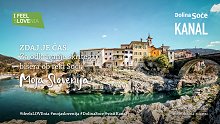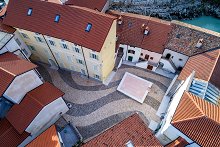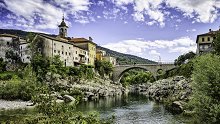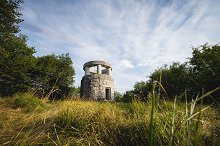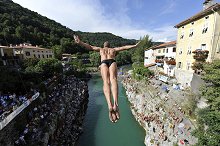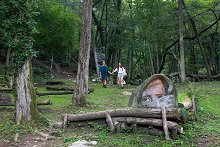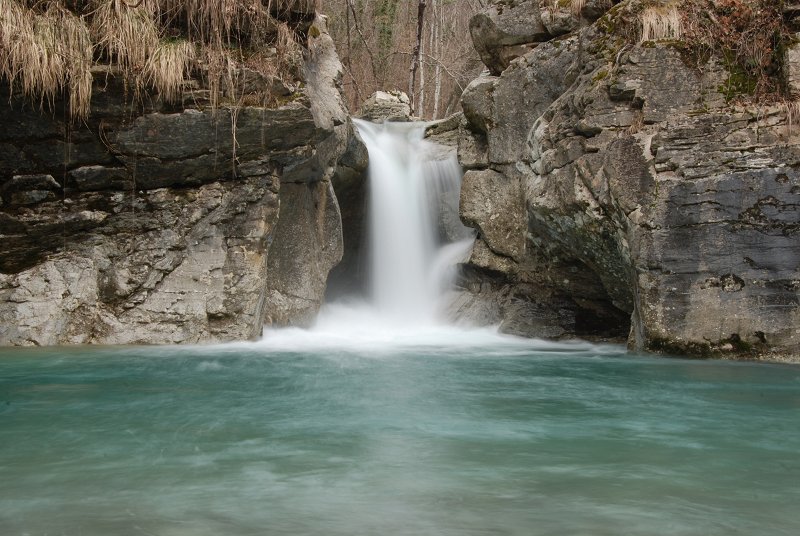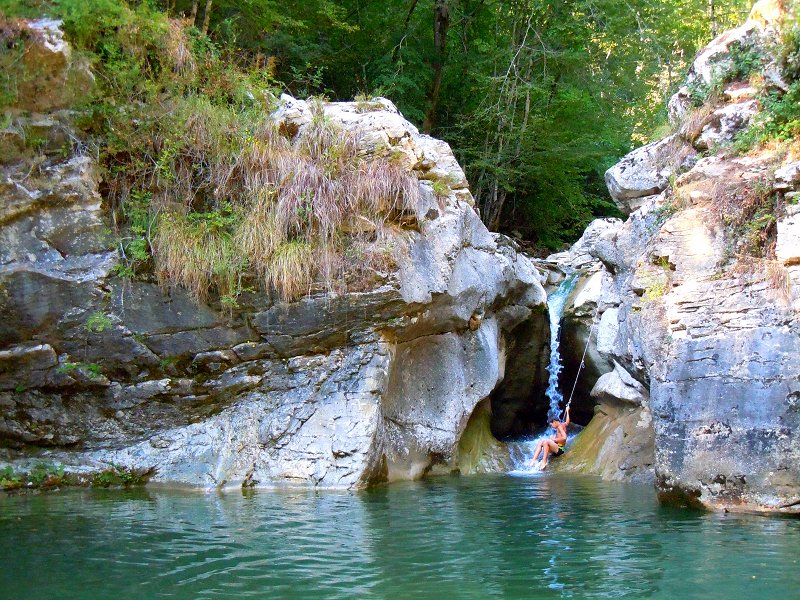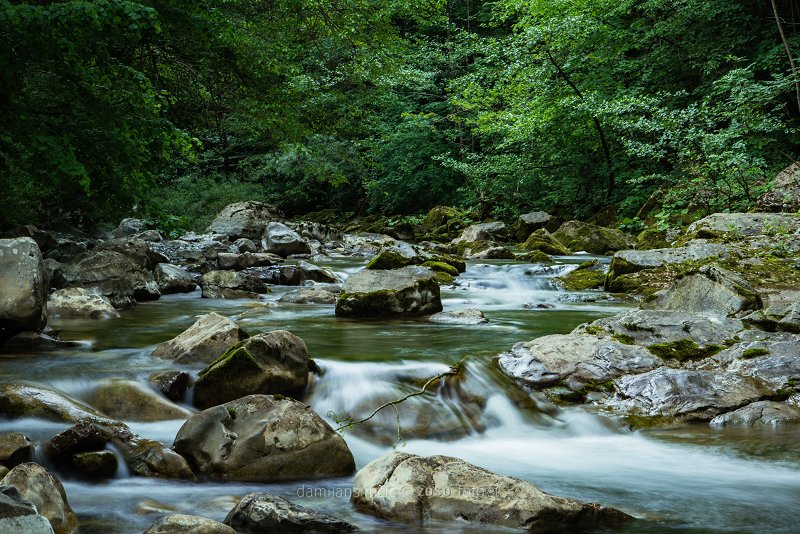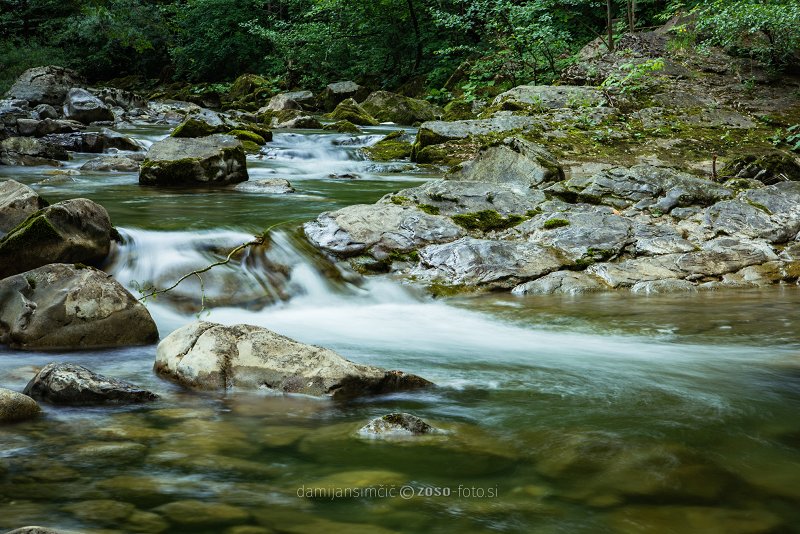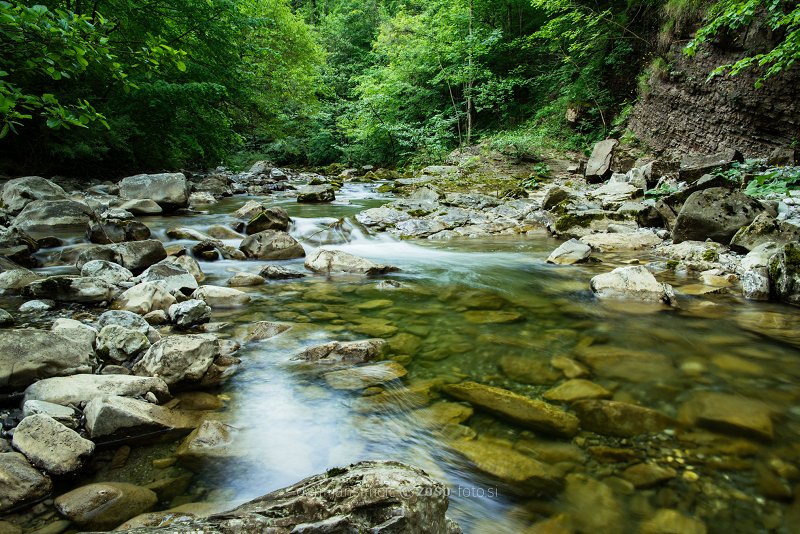River Idrija
The river Idrija, flowing along the border between Italy and Slovenia, is a resort where visitors can enjoy swimming in the tranquillity of unspoilt nature surrounding the river.
The Idrija River springs below the top of Klobučarji (990 metres above sea level). It has two springs that merge into one single flow at the village of Bajtarji - the Idrija River. This relatively long and torrential River, which flows into the Ter River in Italy, is called Ludrio in the Friuli Plain. From the spring to the village of Golo Brdo (right on the other side of the border there is a village called Mirnik or in the Italian language, Mernicco), where Idrija leaves the Slovenian territory, settlements in Slovenia and Italy have been built on both riverbanks: On the Slovenian side - Bajtarji, Mlin, Zarog, Podravno, Hoščina, Skarnjak, Breščina, Žagar, Britof, Brnik, Kobivk and Mišček – and on the Italian side - Zavrt, Skale, Zaločil, Mlinsko, Klinc, Blažin, Melin, Podklanec, Salamanti, Bordoni, Čubci and Košoni. The natural power of the Idrija River, especially its torrential side, has been used smartly already by our ancestors who knew how to take advantage of it by building the mills (in the middle of the previous centuries there were at least eight mills built). By these mills, new smaller mills have been built on the corresponding streams by the individual villages (there are also quite a few of them).
The Idrija River has become world-famous in 1947 when it became a demarcation or the boundary between the new Yugoslavia and Italy. Here, a new history of people that lived by the River and with it, as the connection with the nearby Friuli, Čedad, Videm and nearby Slovenian villages on the right bank of the Idrija River, was broken off. According to some written sources, almost 2.000 inhabitants lived in the area of today’s Kanalski Kolovrat until the end of the First World War (1914-1918), of which approximately 1.110 lived in the parish Marija Celje in 1928. The above-mentioned source presents the notes of the priest Alojzij Makuc. The information itself does not say a lot, but it is difficult to understand it if compared to the present. Above all, it is almost impossible to understand the fact that people in those times could also survive on such a poor area as Kolovrat, when the inhabitants of these mountainous places, located between the two rivers, made a living mainly out of farming, although other complimentary activities, like fishing, were not foreign to them.
Nowadays, the Idrija River offers bathing pleasures and relaxation in the unspoiled nature to many who decide to visit this area of the Municipality Kanal ob Soči.
Source: Life in Kanalski Kolovrat, Zoran and Franc Jerončič.
Authors of photos: Andraž Žnidarčič, Simon Prinčič
